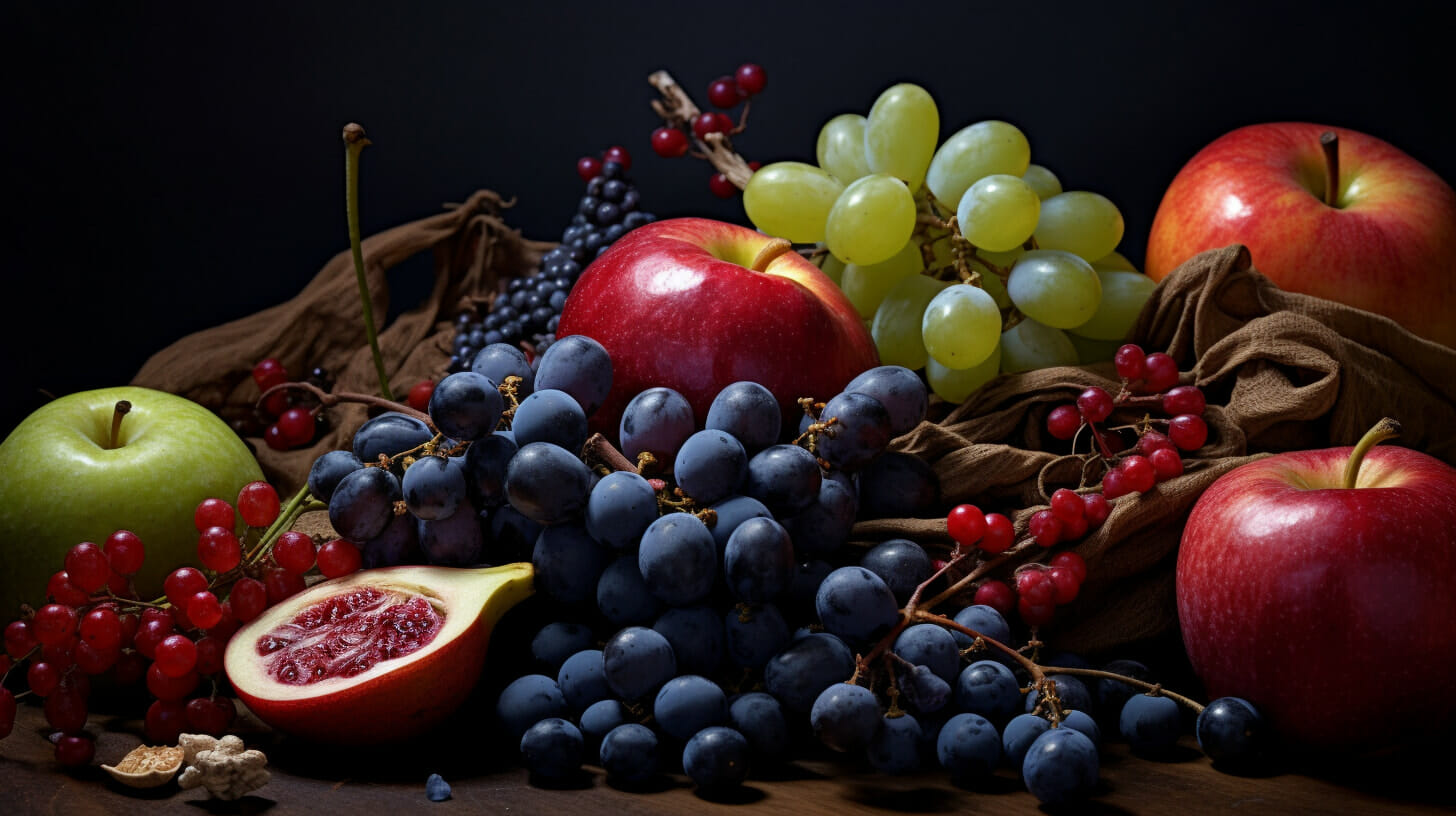Quercetin, a potent antioxidant flavonoid, offers numerous health benefits and can be found in various fruits and vegetables. Top sources of quercetin include capers, red onions, kale, apples, grapes, berries, cherries, citrus fruits, broccoli, and green tea. These are natural foods you can consider to make your diet rich in quercetin.
Research continues to show that various plant compounds may have positive effects on human health. Quercetin, a flavonoid found in a number of vegetables, fruits, and grains, has gained attention for its potential health benefits.
This article will discuss the health benefits of quercetin and what foods are naturally rich in this powerful compound.
What Food Has the Most Quercetin?
Pickled capers is the food with the most quercetin per 100 grams (3.5 ounces).
According to Redford et al. – Pickled capers being the richest known “natural” source of quercetin, with a maximum reported concentration of 520 mg/100 g for canned capers.
Understanding Quercetin and Its Health Benefits
Quercetin is a pigment found in abundance in various plants. It belongs to a class of organic compounds known as flavonoids. Within the body, quercetin acts as a potent antioxidant and helps neutralize free radicals, which can cause damage to cells and their DNA.
Free radicals may also be linked to chronic illnesses such as heart disease, cancer, and certain neurodegenerative disorders.
Research suggests that quercetin may offer several health benefits, including anti-inflammatory, immune-supportive, cardiovascular, and anti-cancer benefits. The majority of research on quercetin to date has been in animal studies or in laboratory environments in test tubes.
Human research on quercetin so far has shown varied results. Some studies have found improvements in blood pressure, cholesterol, and inflammatory markers, while others have found no positive effects of quercetin on things like oxidative stress or inflammation. More research is needed to establish a definitive relationship between quercetin and its health effects in humans.
Foods High in Quercetin
High concentrations of quercetin are found in a few foods such as onion, asparagus, and berries, and small quantities are found in many different fruit and vegetables. – Dabeek et al 2019
With this growing body of research, quercetin is likely beneficial to consume. Luckily, it is found abundantly in foods you may already be eating.
Incorporating the following foods into your diet may help you naturally increase your consumption of quercetin:
| Food | Description |
|---|---|
| Onions | Red onions are known for their high quercetin content. |
| Apples | Apple skins contain significant amounts of quercetin. |
| Berries | Blueberries, cranberries, and blackberries are excellent sources of quercetin. |
| Citrus Fruits | Grapefruits, oranges, and lemons contain high amounts of quercetin. |
| Leafy Greens | Spinach and kale are packed with nutrients, including quercetin. |
| Red Grapes | Red grape skins are rich in quercetin. |
| Cherry Tomatoes | Cherry tomatoes contain significant amounts of quercetin. |
| Broccoli | Broccoli is a nutritious cruciferous vegetable that contains quercetin. |
| Green Tea | Green tea contains quercetin in addition to its antioxidant properties. |
| Buckwheat | Buckwheat seed is rich in quercetin. |
| Cabbage | Red and green cabbage varieties contain quercetin among other nutrients. |
| Black Tea | Black tea also contains quercetin. |
Quercetin Concentrations in Various Foods
Below is a table with foods with the highest amount of quercetin per 100 grams. This table is sorted from most to least amounts of quercetin in different foods for you.
To help you with the conversion: 100 grams is the same as 3.5 ounces.
| Food | Quercetin (mg/100 g or ml) |
|---|---|
| Dill | 79.0 |
| Fennel leaves | 46.8 |
| Onions | 45.0 |
| Oregano | 42.0 |
| Chili pepper | 32.6 |
| Capers | 32.8 |
| Spinach | 27.2 |
| Cranberry | 25.0 |
| Kale | 22.6 |
| Asparagus | 14.0 |
| Lettuce | 14.7 |
| Broccoli | 13.7 |
| Blueberry | 14.6 |
| Cherry | 17.4 |
| Chives | 10.4 |
| Wild leeks | 8.36 |
| Apples | 0.13 |
| Leeks | 0.9 |
| Black tea | 2.50 (mg/100 ml) |
| Red wine | 3.16 (mg/100 ml) |
Intake Recommendations
Quercetin is available in supplement form and generally comes in doses between 500-1,000 mg. While some studies have investigated the potential therapeutic benefits of quercetin supplementation, more conclusive data is needed to support a standardized recommended daily intake recommendation.
Since the optimal dosage and duration of quercetin supplementation are still subjects of ongoing research, it is essential to consult with your healthcare provider before starting any quercetin supplementation regimen.
As with any health supplement, it is important to consume quercetin as part of an overall healthy lifestyle which generally means eating a variety of healthy foods, drinking plenty of water, and making sure you get regular exercise.
While ongoing research is needed to clearly prove quercetin’s benefits for human health, preliminary research is promising with various foods known to be high in this compound.
Sources
- Anand David et al. 2016. Overviews of Biological Importance of Quercetin: A Bioactive Flavonoid.
- Askari et al. 2012. The effect of quercetin supplementation on selected markers of inflammation and oxidative stress.
- Egert et al. 2009. Quercetin reduces systolic blood pressure and plasma oxidised low-density lipoprotein concentrations in overweight subjects with a high-cardiovascular disease risk phenotype: a double-blinded, placebo-controlled cross-over study.
- Egert & Rimbach 2011. Which sources of flavonoids: complex diets or dietary supplements?
- Guo et al. 2019. Quercetin Actions on Lipid Profiles in Overweight and Obese Individuals: A Systematic Review and Meta-Analysis.
- Hashemzaei et al. 2017. Anticancer and apoptosis‑inducing effects of quercetin in vitro and in vivo.
- Javadi et al. 2017. The Effect of Quercetin on Inflammatory Factors and Clinical Symptoms in Women with Rheumatoid Arthritis: A Double-Blind, Randomized Controlled Trial.
- Nieman et al. 2009. Effects of quercetin and EGCG on mitochondrial biogenesis and immunity.
- Nishimura, et al. 2019. Effect of Daily Ingestion of Quercetin-Rich Onion Powder for 12 Weeks on Visceral Fat: A Randomised, Double-Blind, Placebo-Controlled, Parallel-Group Study.
- Kozłowska & Szostak-Wegierek. 2014. Flavonoids–food sources and health benefits
- Li et al. 2016. Quercetin, Inflammation and Immunity.
- Pham-Huy et al. 2008. Free radicals, antioxidants in disease and health
- Yang et al. 2020. Quercetin: Its Main Pharmacological Activity and Potential Application in Clinical Medicine
- Dabeek et al. 2019. Dietary Quercetin and Kaempferol: Bioavailability and Potential Cardiovascular-Related Bioactivity in Humans
- Redford et al. 2020. The ubiquitous flavonoid quercetin is an atypical KCNQ potassium channel activator

Tana Bao, BSN, MSN, APRN, NP
Tana is a family nurse practitioner dual board board certified through the American Academy of Nurse Practitioners (NP-C) as well as the American Nurses Credentialing Center (FNP-BC).
